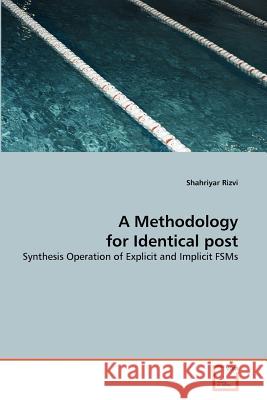A Methodology for Identical post » książka
A Methodology for Identical post
ISBN-13: 9783639368918 / Angielski / Miękka / 2011 / 156 str.
Modeling an FSM in implicit style is a more powerful, abstract and concise method to define an FSM as compared to explicit coding style. Implicit style models FSMs in terms of activities at different clock cycles without the need for defining state transitions explicitly and partitioning the code into combinational (next state and output logic) and sequential (present state register) segments. However, implicit style registers all FSM outputs by default; unlike explicit style where the designer can choose to make the outputs combinational or registered. These flip-flops delay the outputs by one clock cycle and assert them for one or more extra cycles in multi-cycle operations, as compared to explicit style. In addition, Mealy outputs in implicit FSMs cannot respond immediately to changes in input. We developed a methodology that removes the output flip-flops after synthesis. This modification process involves editing EDIF files generated by third-party synthesizers (such as FPGA Express from Synopsys) and providing the modified EDIF file to the place-and-route tool. This methodology ensures that a modified implicit FSM operates the same way as an explicit FSM, after synthesis.











